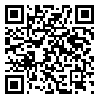Volume 13, Issue 2 (Volume 13, No 2 2022)
jdc 2022, 13(2): 107-118 |
Back to browse issues page
Download citation:
BibTeX | RIS | EndNote | Medlars | ProCite | Reference Manager | RefWorks
Send citation to:



BibTeX | RIS | EndNote | Medlars | ProCite | Reference Manager | RefWorks
Send citation to:
Yazdani Hamid F. Repurposing of drug candidates for treatment of skin cancer. jdc 2022; 13 (2) :107-118
URL: http://jdc.tums.ac.ir/article-1-5601-en.html
URL: http://jdc.tums.ac.ir/article-1-5601-en.html
Pharmaceutical Sciences Branch, Islamic Azad University, Tehran, Iran , f.yhamidi@gmail.com
Abstract: (1136 Views)
Skin cancers are highly prevalent malignancies that affect millions of people worldwide. These include melanomas and nonmelanoma skin cancers. Melanomas are among the most dangerous cancers, while nonmelanoma skin cancers generally exhibit a more benign clinical pattern; however, they may sometimes be aggressive and metastatic.
Melanomas typically appear in body regions exposed to the sun, although they may also appear in areas that do not usually get sun exposure. Thus, their development is multifactorial, comprising endogenous and exogenous risk factors. The management of skin cancer depends on the type; it is usually based on surgery, chemotherapy, immunotherapy, and targeted therapy. In this respect, oncological treatments have demonstrated some progress in the last years; however, current therapies still present various disadvantages such as little cell specificity, recurrent relapses, high toxicity, and increased costs. Furthermore, the pursuit of novel medications is expensive, and the authorization for their clinical utilization may take 10-15 years. Thus, repositioning of drugs previously approved and utilized for other diseases has emerged as an excellent alternative. In this mini-review, we aimed to provide an updated overview of drugs’ repurposing to treat skin cancer and discuss future perspectives.
Melanomas typically appear in body regions exposed to the sun, although they may also appear in areas that do not usually get sun exposure. Thus, their development is multifactorial, comprising endogenous and exogenous risk factors. The management of skin cancer depends on the type; it is usually based on surgery, chemotherapy, immunotherapy, and targeted therapy. In this respect, oncological treatments have demonstrated some progress in the last years; however, current therapies still present various disadvantages such as little cell specificity, recurrent relapses, high toxicity, and increased costs. Furthermore, the pursuit of novel medications is expensive, and the authorization for their clinical utilization may take 10-15 years. Thus, repositioning of drugs previously approved and utilized for other diseases has emerged as an excellent alternative. In this mini-review, we aimed to provide an updated overview of drugs’ repurposing to treat skin cancer and discuss future perspectives.
Type of Study: Review |
Subject:
Special
Received: 2022/09/20 | Accepted: 2022/08/6 | Published: 2022/08/6
Received: 2022/09/20 | Accepted: 2022/08/6 | Published: 2022/08/6
Send email to the article author
| Rights and permissions | |
 |
This work is licensed under a Creative Commons Attribution-NonCommercial 4.0 International License. |






